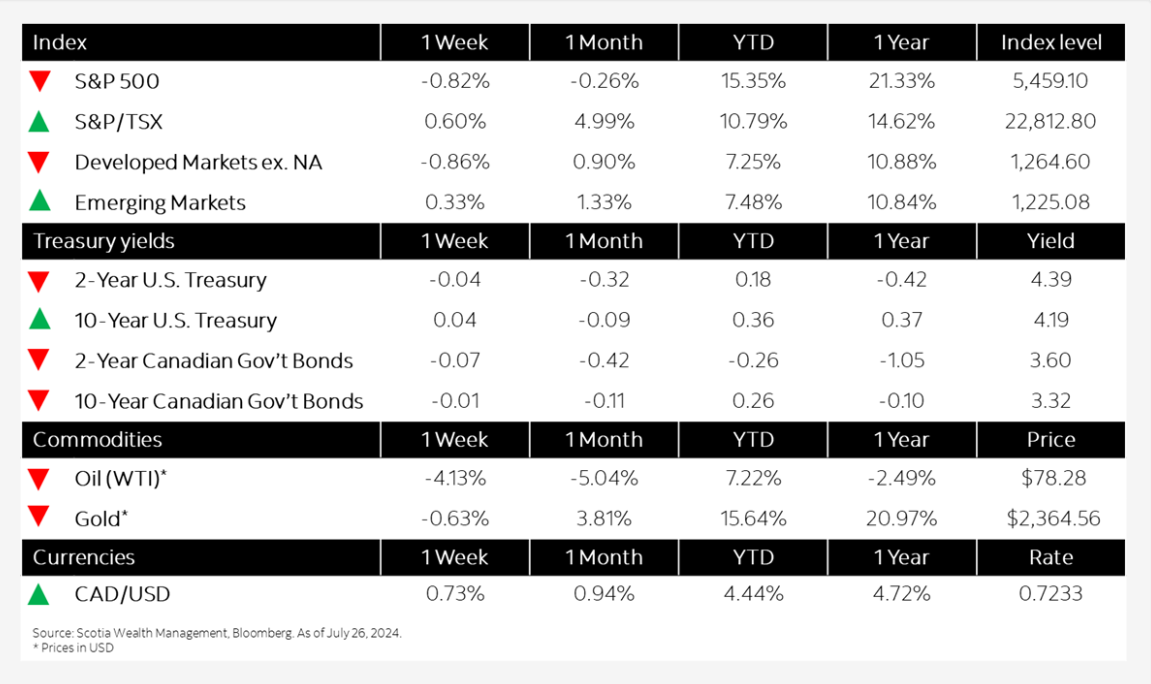
Market Watch: July 26
This week’s highlights
- Megacap tech and chip stocks continue to weigh on equity markets
- Bond yields mixed following release of Fed’s preferred inflation gauge
- Bank of Canada cuts key rate to 4.5%, tees up additional easing
- U.S. economic growth regains momentum in second quarter as inflation slows
- Eurozone PMI composite hits 5-month low
- In the news: Chip stocks face setback despite strong demand
Week in review
Megacap tech and chip stocks continue to weigh on equity markets



